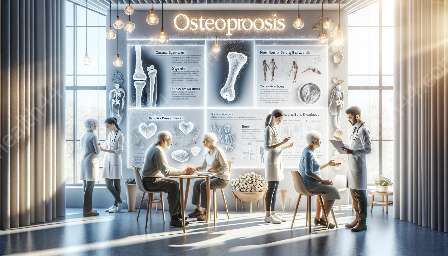Osteoporosis is a condition characterized by weakened bones, making them fragile and more likely to break. This topic cluster aims to provide a comprehensive understanding of osteoporosis in women and its impact on health. We will explore the causes, risk factors, symptoms, diagnosis, and treatment options for osteoporosis. Additionally, we will discuss the relationship between osteoporosis and other health conditions, highlighting the importance of preventive measures and lifestyle changes to better manage this condition.
Understanding Osteoporosis in Women
Osteoporosis is more common in women, especially after menopause. This is due to the decline in estrogen levels, which plays a significant role in bone density. As a result, women are more susceptible to developing osteoporosis compared to men. Understanding the factors that contribute to the development of osteoporosis in women is crucial for early detection and preventive measures.
Causes and Risk Factors
Osteoporosis develops when bone density decreases, leading to brittle and fragile bones. Several factors contribute to the development of osteoporosis in women, including:
- Hormonal Changes: Estrogen plays a crucial role in maintaining bone density, and the decline in estrogen levels during menopause increases the risk of osteoporosis.
- Age: As women age, their bone density naturally decreases, making them more susceptible to osteoporosis.
- Dietary Factors: Inadequate intake of calcium and vitamin D, essential for bone health, can contribute to the development of osteoporosis.
- Physical Activity: Lack of weight-bearing exercises can lead to decreased bone density, increasing the risk of osteoporosis.
Symptoms and Diagnosis
Osteoporosis is often referred to as a silent disease because it progresses without noticeable symptoms until a fracture occurs. Common symptoms of osteoporosis in women include back pain, loss of height, and stooped posture. However, the most common way to diagnose osteoporosis is through a bone density test, such as a dual-energy X-ray absorptiometry (DXA) scan.
Management and Treatment
Preventing osteoporosis in women involves lifestyle modifications and, in some cases, medical intervention. Strategies for managing osteoporosis include:
- Dietary Changes: Consuming a diet rich in calcium and vitamin D helps maintain bone health and reduces the risk of osteoporosis.
- Physical Activity: Engaging in weight-bearing exercises, such as walking, dancing, and resistance training, helps improve bone density and strength.
- Medication: In some cases, healthcare providers may prescribe medications to prevent further bone loss and reduce the risk of fractures.
Osteoporosis and Other Health Conditions
Osteoporosis can have a significant impact on overall health and may be associated with other health conditions. Understanding the relationship between osteoporosis and other health conditions is important for comprehensive health management. Some common health conditions related to osteoporosis in women include:
- Osteoarthritis: Osteoporosis and osteoarthritis are both degenerative conditions that can affect the skeletal system. It is important to address both conditions to maintain mobility and overall well-being.
- Cardiovascular Health: Studies have shown a potential link between osteoporosis and cardiovascular disease. Maintaining bone health may also benefit cardiovascular health.
- Thyroid Disorders: Certain thyroid disorders can impact bone health, leading to an increased risk of osteoporosis.
Preventive Measures and Healthy Lifestyle Choices
Given the impact of osteoporosis on overall health, it is essential for women to take proactive measures to reduce the risk of developing this condition. Preventive measures and healthy lifestyle choices include:
- Regular Exercise: Engaging in weight-bearing and muscle-strengthening exercises helps improve bone density and reduces the risk of osteoporosis.
- Healthy Nutrition: Consuming a balanced diet rich in calcium, vitamin D, and other essential nutrients supports bone health.
- Regular Health Check-ups: Routine screenings, such as bone density tests, can help detect osteoporosis early and facilitate timely intervention.
- Smoking Cessation: Smoking can impair bone health, so quitting smoking contributes to overall bone health and reduces the risk of osteoporosis.
By incorporating these preventive measures and healthy lifestyle choices, women can effectively manage osteoporosis and reduce its impact on their overall health.


